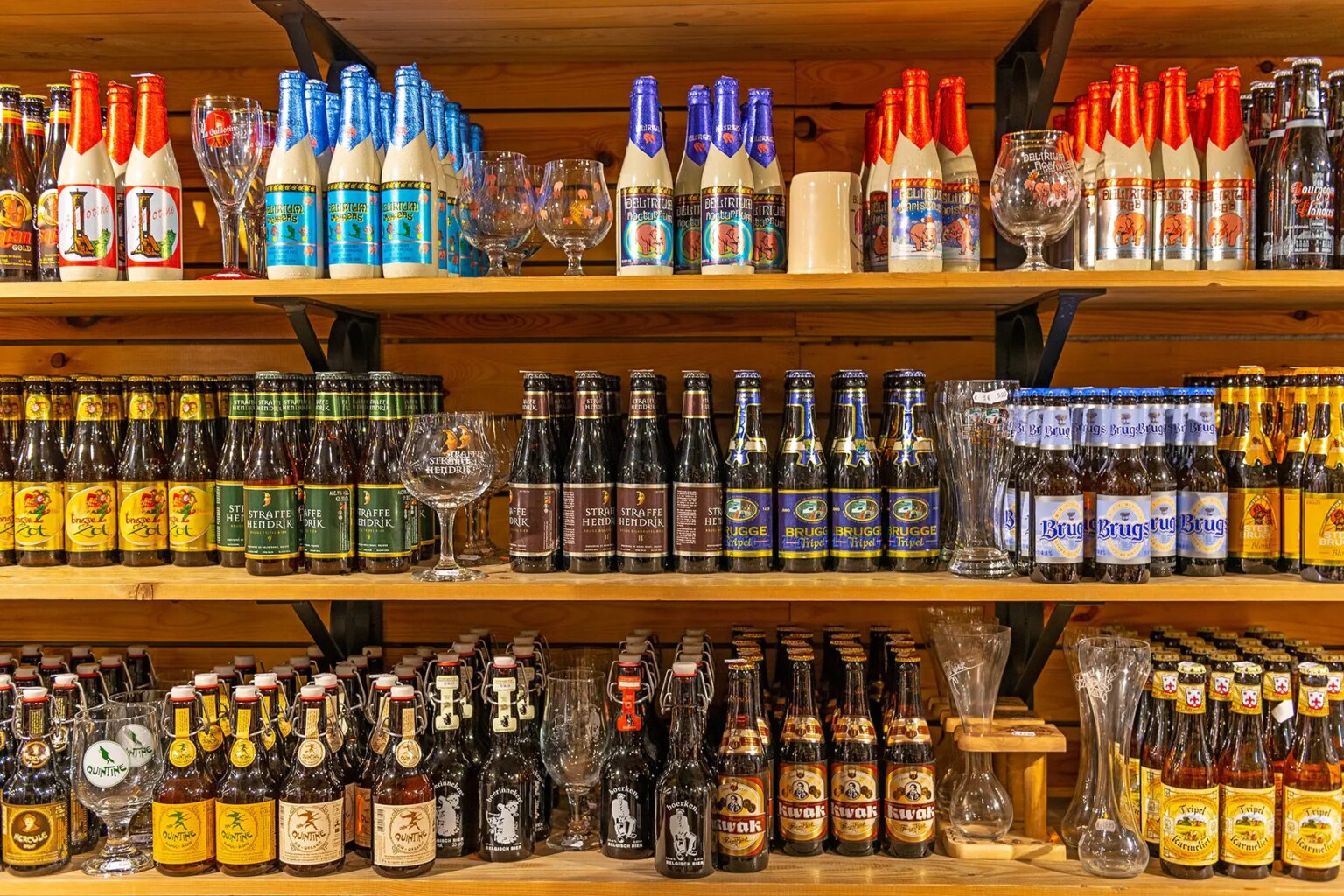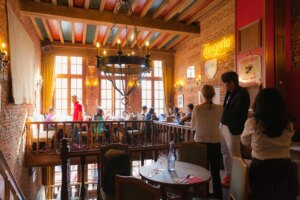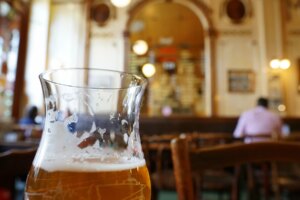Belgium is one of the world’s powerhouses when it comes to brewing beer, with a lengthy history and a cultural dedication towards the craft. Whether it’s the diverse set of local styles or the attention to quality, there’s a lot to like when it comes to Belgian beer.
Learn all about Belgium’s liquid gifts to the world, including topics such as:
History of Belgian beer
Beer production in Belgium dates back to at least the twelfth century. Back then, brewing was largely a monastic affair, with monks setting up facilities within their own abbeys as part of their aim to provide for their own sustenance (not to mention avoid consuming unsanitary drinking water). The absence of a purity law as with German beer meant that monastic brewers were free to include any ingredient or try any fermentation method that piqued their interest.
During the Middle Ages, Belgian beer was commonly made using an herbal mixture known as gruit (this was also common with Dutch beer), which was actually mandatory in Flanders. However, monasteries were exempt from the mandatory purchase of gruit; instead, the monks found that hops offered a preservative quality that gruit lacked. Over time, brewers towards the east of Belgium were more keen to use hops, while those in the west leaned towards herbal mixtures and acidification for a longer shelf life. The result today is that Belgian beer has a wider variety of styles, methods, and tastes that can’t be found anywhere else.
When it comes to fermentation, Belgium stands alone amongst beer-producing nations in that it uses four distinct methods to brew beer:
- Warm fermentation (common with Trappist ales)
- Cool fermentation (the typical method for producing lagers)
- Spontaneous fermentation (indigenous to Belgium, this method produces lambic beers)
- Mixed fermentation (common with the Flanders red ale)
Typical bars in Belgium
Beer is an essential part of Belgian culture, so much so that UNESCO inscribed Belgian beer culture into its list of Intangible Cultural Heritage of Humanity in 2016. It’s also a key part of Belgian cuisine, so any brasserie, bistro, or taverne is likely to have an extensive list of Belgian beers on offer.

In Belgium, there are a couple of types of beer-drinking establishments, all of which land somewhere between a restaurant (where guests go for the purpose of eating) and a café (where guests go for the purpose of drinking). A brasserie generally offers a fixed but fairly extensive menu throughout the day, though eating isn’t necessarily a requirement. Bistros tend to be even more casual than this, serving only a simple menu. A bar or taverne is where the focus is solely on the liquids inside the glass rather than any food that might reach your table.
Almost all of these establishments in Belgium will typically have a couple of beers on draught; one is almost always a pilsener and the other is perhaps an ale of some kind. Bottle lists are often lengthy, many being abbey or Trappist beers. Sour beers (such as lambics or Flemish red ales) are available in more limited numbers (and usually the sweeter, mass-produced brands), except at places with more of a focus on sour beers or Belgian craft breweries.
Local Belgian beer styles
Belgian beer is traditional, intensely local, and full of flavor. As you traverse this compact country, so too will your tastebuds, whether it’s the Flemish lambics or the Wallonian saisons. Here’s a quick taste of the three Belgian beer styles that truly define this brewing powerhouse of a country.
Gueuze
Belgium is home to perhaps one of the weirdest and most wonderful of beer styles: the lambic. Lambic beers differ from other beers in that the fermentation doesn’t occur in a sealed container; instead, Belgian lambic beers ferment in the open, reacting with the wild airborne yeasts occurring in the Pajottenland area (immediately southwest of Brussels, as well as Anderlecht in Brussels). Gueuze is a particular type of lambic beer, comprising of a mixture of young lambic (aged for one year) and old lambic (aged for two or three years). Blending the two prompts a second fermentation, resulting in a wilder end result.
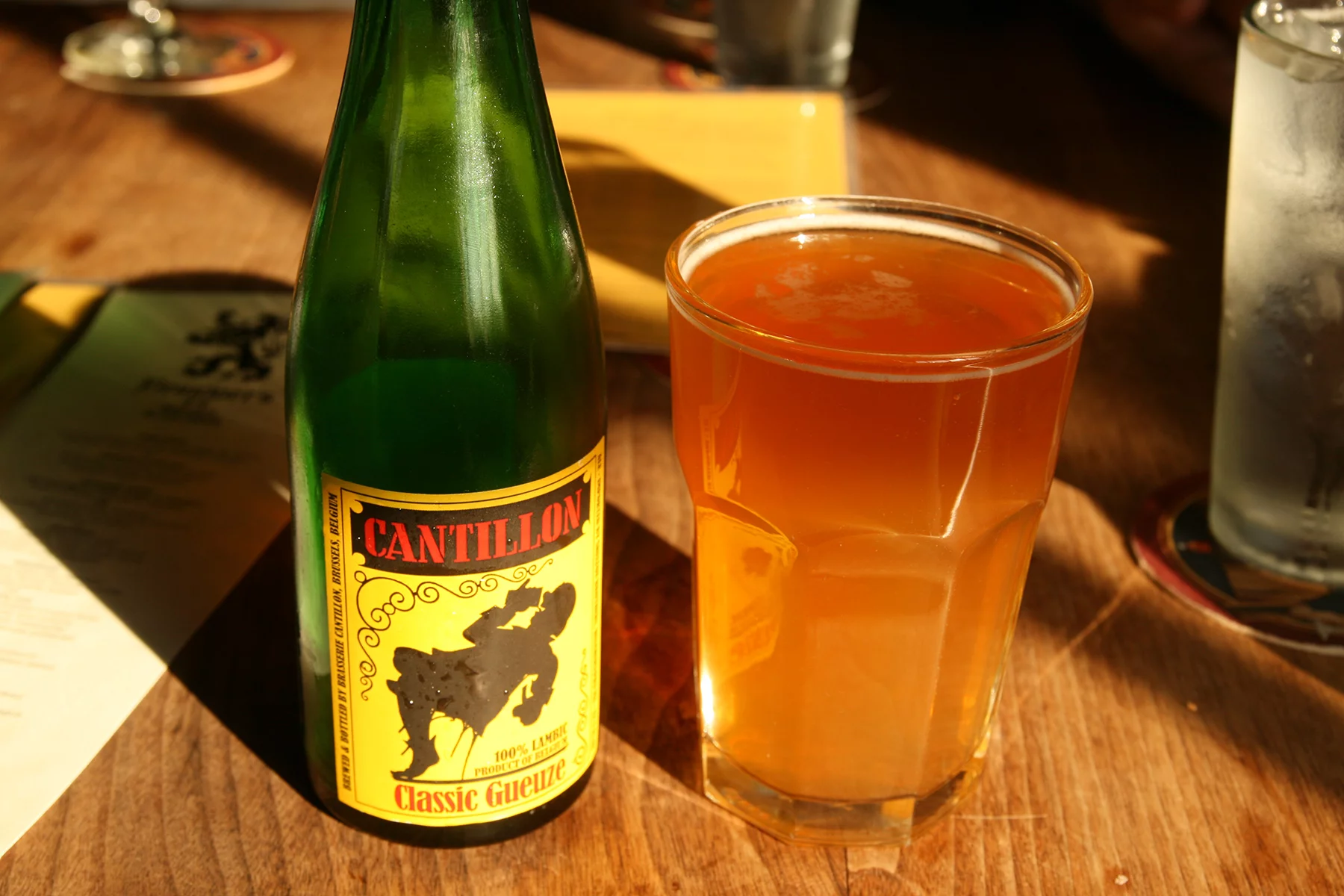
Describing gueuze means using vocabulary you don’t usually associate with beer: hay, must, a barnyard, or even horse blankets. These effervescent beers have a champagne-like quality about them, with a balance between tart fruit and a dry finish. The champagne similarities don’t stop there: gueuzes come in a champagne bottle, which a bartender then sets in a cozy little basket. Each brewery in Belgium often produces their own glass, but they tend to be tall lambic glasses.
Some of Belgium’s most acclaimed gueuze beers include:
- Oude Geuze by 3 Fonteinen (Lot, Vlaams-Brabant)
- Cuvée Saint-Gilloise by Cantillon (Anderlecht, Brussels)
- Oude Geuze by Geuzestekerij De Cam (Gooik, Vlaams-Brabant)
- Oude Gueuze à l’Ancienne by Gueuzerie Tilquin (Rebecq, Brabant Wallon)
Saison
Gueuze may the Bruxelloise champagne, but saison is Belgium’s more working-class cousin. While the old story that farmhands brewed saison during winter and drank it in the summer isn’t quite accurate, saison was certainly historically popular amongst urbanite manual laborers and rural farmers alike. Saison is, like any beer, open to interpretation, but critics tend to coalesce around one gold standard: Saison Dupont.
![Saison Dupont (Photo: [cipher] / Flickr)](https://admin.expatica.com/be/wp-content/uploads/sites/4/2023/11/saison-dupont.jpg)
These golden beers are full of yeast, spice, and citrus, so there’s a lot going on inside the bottle. As a result, this Belgian beer goes well in a glass that really lets you stick your nose in it, such as a snifter or a tulip. Many saisons are served in slightly unconventional bottle sizes, such as 37.5cl or 75cl. Just like many Belgian lambic beers, make sure you keep a corkscrew handy as these bottles often have a cork in them.
The best Belgian saison beers include:
- La Moneuse by Brasserie de Blaugies (Blaugies, Hainaut)
- IV Saison by Brasserie de Jandrain-Jandrenouille (Jandrain-Jandrenouille, Brabant Wallon)
- Avec les Bons Voeux by Brasserie Dupont (Tourpes, Hainaut)
- Fantôme Saison by Brasserie Fantôme (Soy, Luxembourg)
Trappist
Trappist beers are less about the style and more about who makes it. In fact, Trappist beers are made by Trappist monks and have certification to use the word ‘Trappist’ on their labels from the International Trappist Association. There are three criteria for Trappist breweries: the brewery must be inside of a Trappist monastery; brewing must only be a secondary activity for the monks, and; the brewery shouldn’t be a profit-seeking venture. There are 12 Trappist breweries worldwide, of which five are in Belgium. Trappist beers are often (but not always) top-fermented ales known as Enkels, Dubbels, Tripels, and Quadrupels.
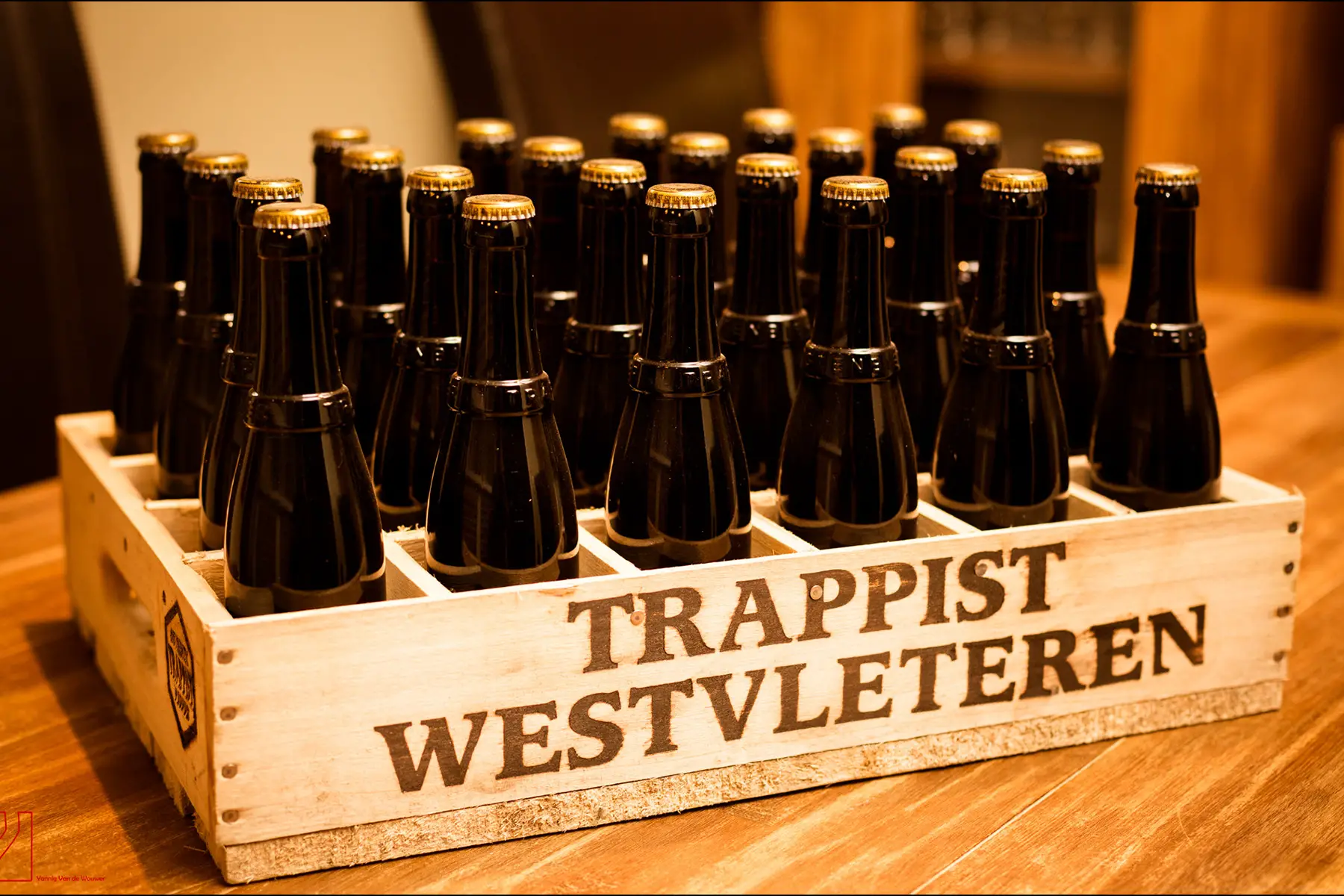
Almost regardless of style, a Belgian Trappist beer is best served in a chalice. Chalices are bulky, often characterized by a thick stem and a wide mouth. A chalice gives these special beers a chance to breathe, as they tend to have high carbonation (and a huge head as a result) and complex flavors. They’re also incredibly fun to drink a Belgian beer out of.
A few of the most celebrated Belgian Trappist beers include:
- Orval by Brasserie d’Orval (Villers-devant-Orval, Luxembourg)
- Rochefort 10 by Abbaye Notre-Dame de Saint-Rémy (Rochefort, Namur)
- St. Bernardus Abt 12 by Brouwerij St. Bernardus (Watou, West-Vlaanderen)
- Westvleteren 12 by Brouwerij De Sint-Sixtusabdij van Westvleteren (Westvleteren, West-Vlaanderen)
Craft beer and homebrewing in Belgium
Belgium’s rich tradition of brewing meant that it took a while to get caught up in the trends in craft beer. Belgian beer drinkers have long expected high quality from their brews, whether it comes from a small Trappist brewery or an industrial producer of Belgian ales. Still, a burgeoning craft beer scene is challenging traditional styles, albeit subtly.

While many countries with a brief brewing tradition latched onto bitter American-inspired India Pale Ales, Belgian craft breweries are taking the same ethos and either applying it to Belgian beer styles or producing trendy styles like IPAs or imperial stouts in ways that better suit the Belgian palate. Craft beer bars and bottle shops abound in Belgian cities with a big focus on local lambics and pale ales; some bars in Brussels and Antwerp also import foreign craft beer, especially from the UK, the Netherlands, Denmark, and Italy.
A few Belgian craft breweries worth keeping an eye out for include:
- Brasserie De La Senne (Brussels)
- Brouwerij Alvinne (Moen, West-Vlaanderen)
- Brussels Beer Project (Brussels)
- De Dolle Brouwers (Diksmuide, West-Vlaanderen)
- De Struise Brouwers (Oostvleteren, West-Vlaanderen)
Brewing beer is close to the hearts and careers of many Belgians, so homebrewing is fairly popular as a result (one Belgian brewer even posted their beer recipes online for homebrewers to give them a shot). Many homebrewers buy brewing equipment from large shops like Brouwland. Belgium is home to plenty of hop varieties; homebrewers should have little trouble finding the right hops for their brews as a result.
The most popular Belgian beer brands
In most countries, the best-selling beers are generally light and inoffensive pilseners. That isn’t entirely the case in Belgium. While a few pilseners like Jupiler and the cult-favorite Cara Pils are widely available across Belgium, Belgian beer drinkers also take to witbiers and blonde ales in large numbers. Those unfamiliar with Belgian beers might be surprised to hear that Stella Artois isn’t particularly popular in Belgium; in fact, Belgians have strong opinions about those who drink it.
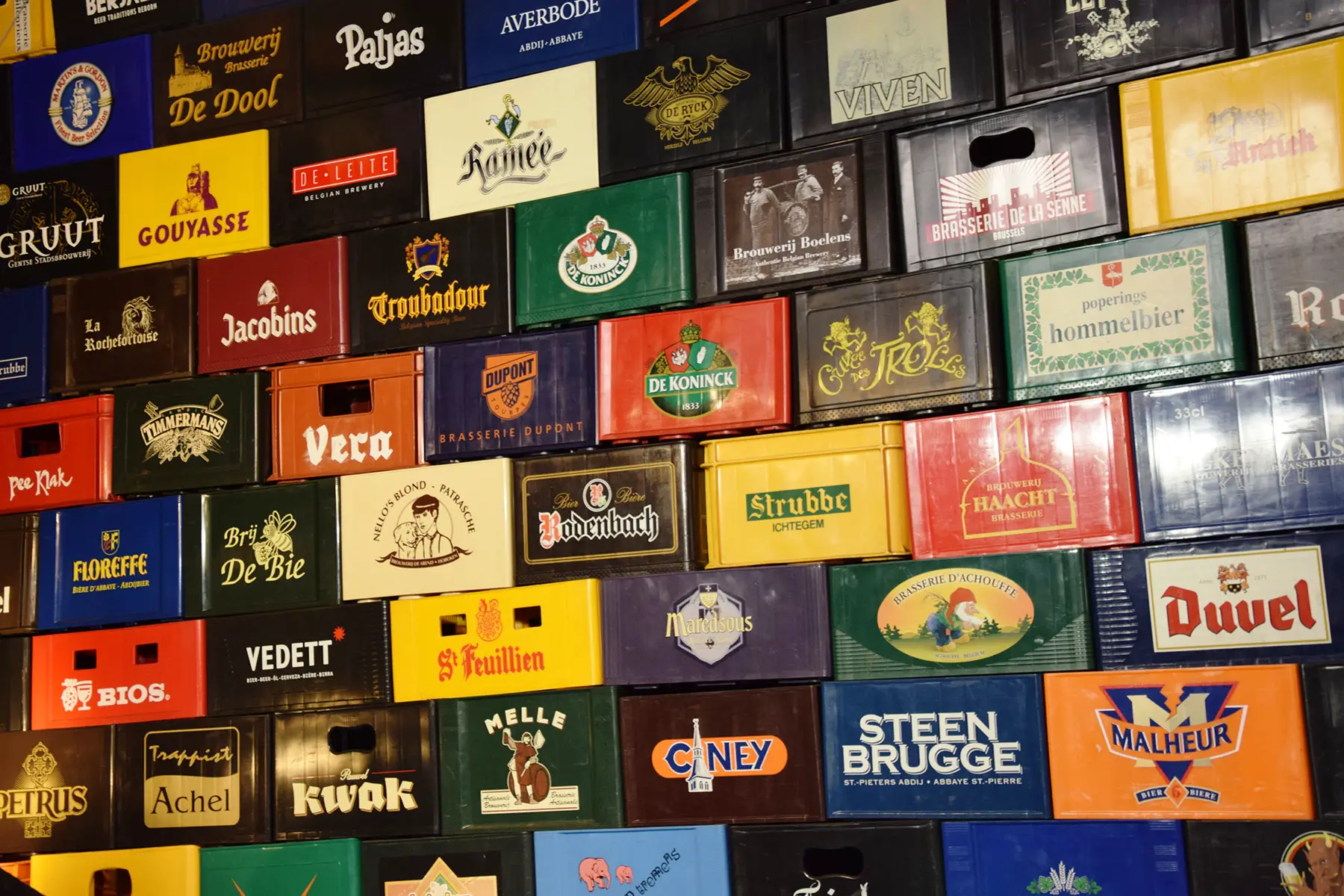
Some of the best-selling Belgian beers include:
